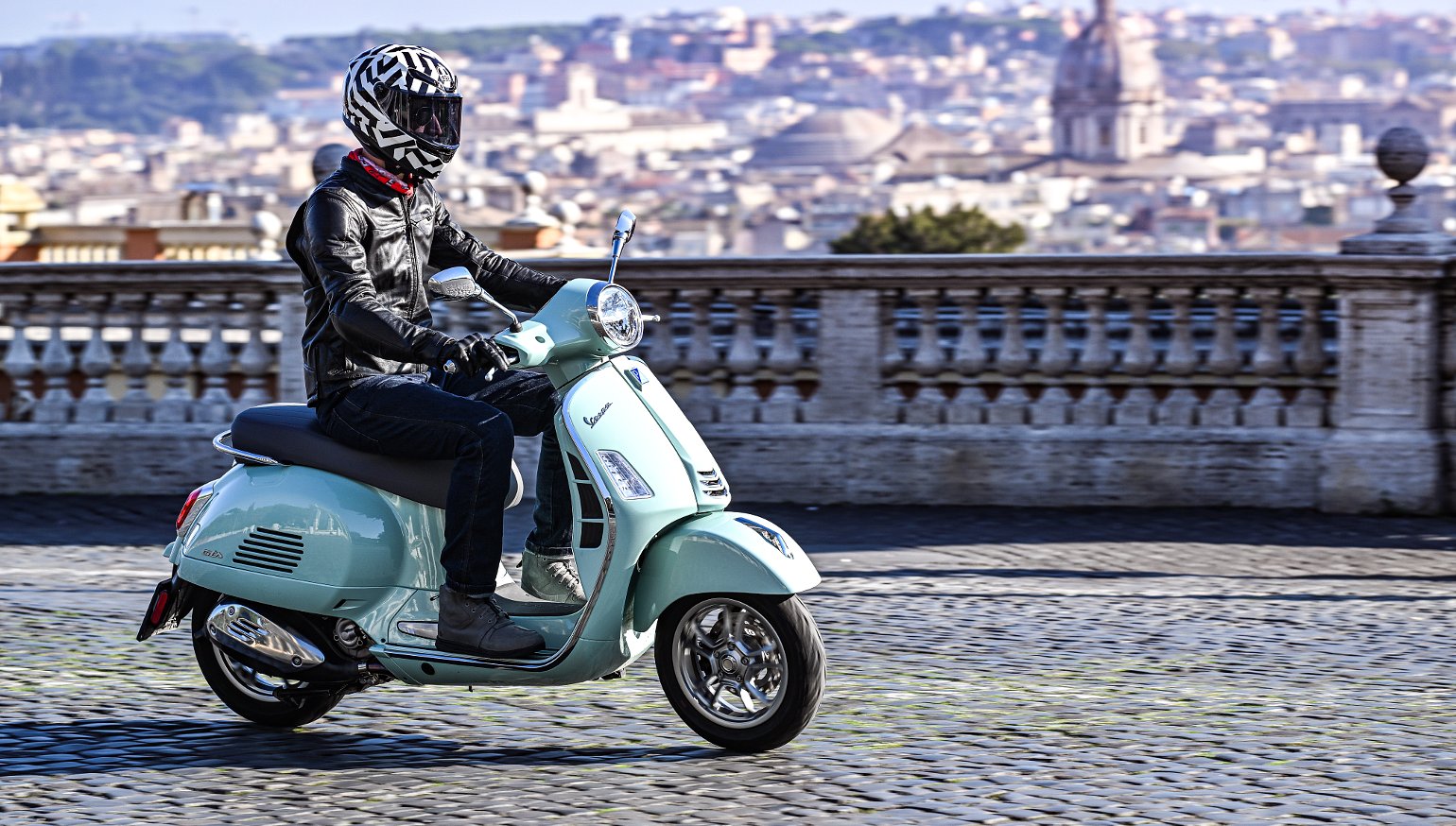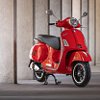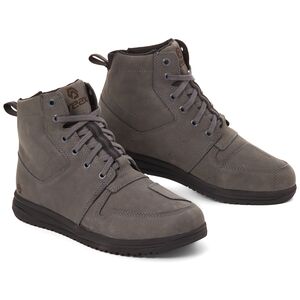If you want a Vespa that can hang with modern traffic and hold its own on the freeway, you’ll need a GTS 300.
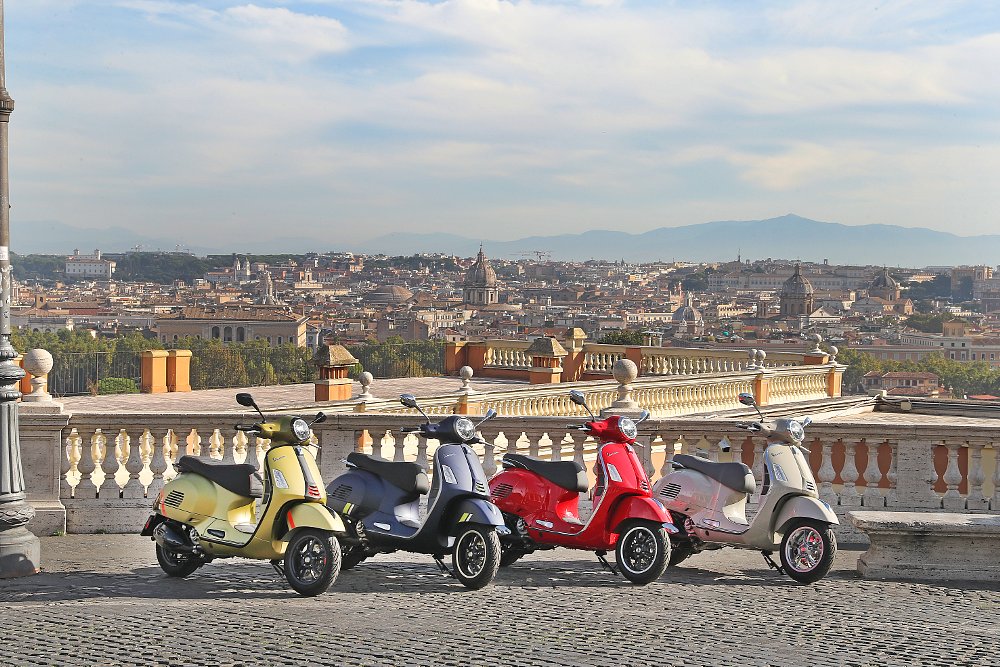
The mighty GTS is the largest, most powerful production Vespa you can buy. The GTS line breaks down into four trim levels, and all four received updates for 2023. What’s new with the GTS, and what’s it like to ride one? I rewatched "Roman Holiday" and packed my bags for a thoroughly Italian experience. Here's what I learned.

GTS means Granturismo Sport
At a glance, the 2023 Vespa GTS ($7,799 base) doesn’t look all that different from the old GTS 300 HPE models. Vespa’s latest 300 lineup gets revised wheels, resculpted seats, new designs for the glove box and leg shields, updated mirrors, and some other styling changes. Look closely and you’ll spot one of the biggest updates of all: a new pivoting support on the front suspension that reduces diving and twisting forces.
The dash takes a much-needed leap forward from GTS HPE series. The new GTS lineup has two dash options. First is a split analog/digital design that puts a traditional needle speedometer across the top with a three-inch negative LCD below. At a glance, it looks similar to the HPE generation, but the display has more functions (including a coolant temp gauge) and a cleaner appearance. The other option is a full TFT display available on the Supertech model. The screen is bright with good resolution and plenty of menus to explore, but it doesn’t fit the shape of the dash bezel nearly as well as the ana/digi display.

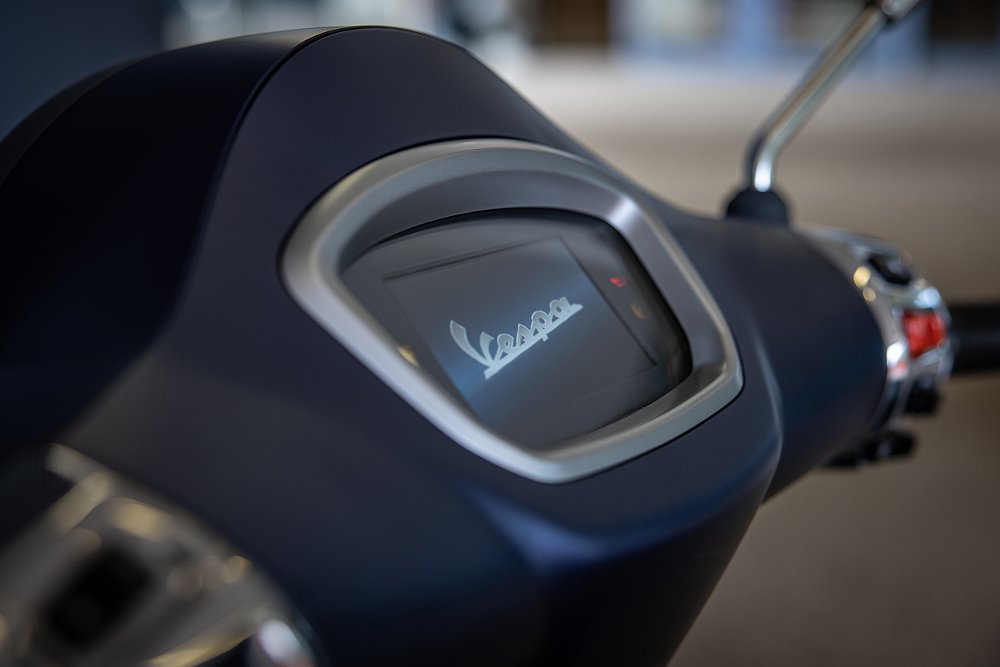
Vespa also redesigned the switchgear for the new GTS line. Unfortunately, this change isn’t doing the GTS many favors, even though it came from good intentions. The old handlebar design integrated the switches and buttons into the handlebar trim itself. Vespa wanted to create a connection to its historic models, redesigning the switch area to resemble vintage Vespas with a defined “split” in the trim near the grips.
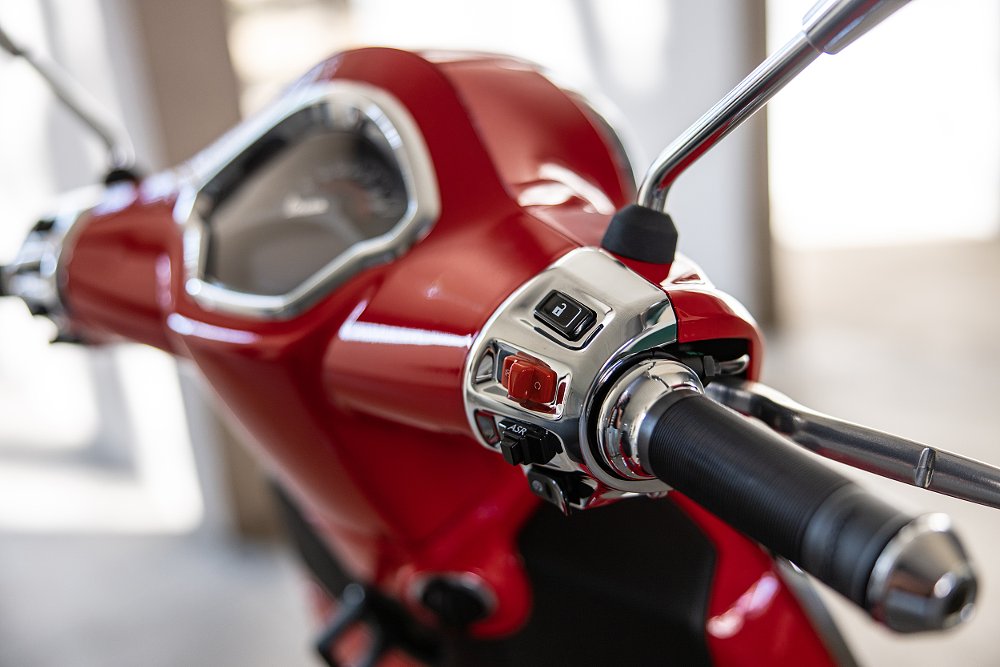
The new switch areas use chromed plastic covers that don’t look or feel as nice as the rest of the scooter. I could almost forgive this if the chromed parts came in black for the models with all-black trim, but they get lookalike chrome, too. Maybe some folks out there will dig the retro chrome look. I’m not one of them, and I hope Vespa offers a blacked-out or polished aluminum alternative.

All GTS models use keyless ignition and wireless fobs now. The glove box and underseat compartment are both opened without keys, as well. One new feature on the fob is the “find my Vespa” button that flashes the bike’s four-ways once so you can find your ride in a dark or crowded parking lot. This would be especially nice in Italy where every other scooter seems to be a Vespa.

Engine and running gear
At the heart of the Vespa is a 278 cc, liquid-cooled single with four valves and a continuously variable transmission. The new Euro 5 engine cuts down on emissions with a very slight power increase over the old 300 HPE engine. The engine and swingarm are supported by dual shocks in the rear.
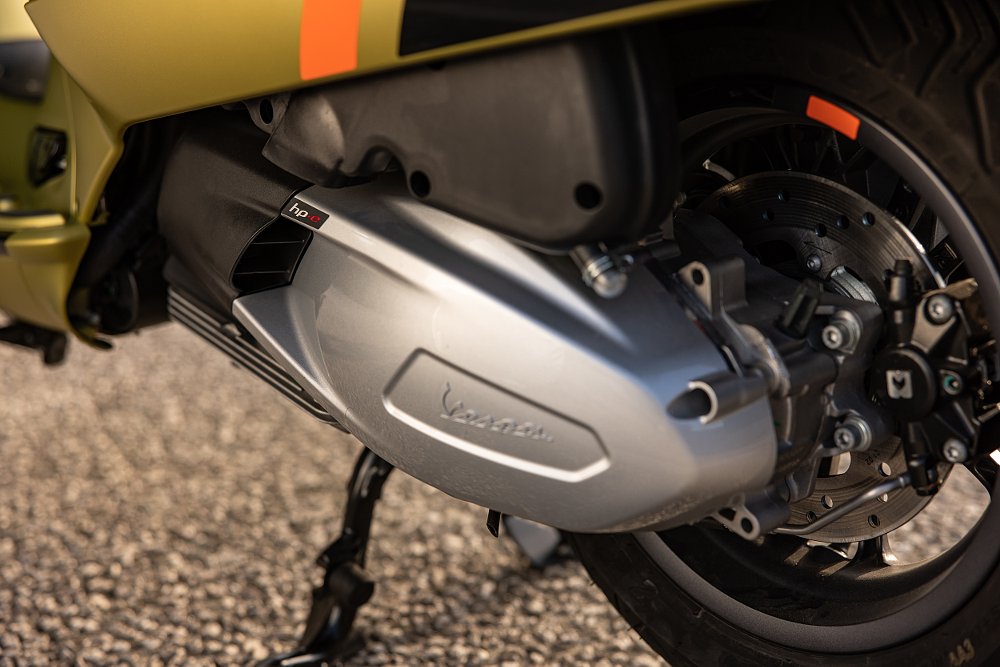
Each GTS variant rides on 12-inch wheels with a Nissin caliper up front and a ByBre bringing up the rear. The front suspension is Vespa’s usual trailing-link design with that iconic single-sided appearance. Between the wheels is a steel monocoque frame. Almost all of any modern Vespa is still steel. Only the front fender, handlebar trim panels, and a few other cosmetic parts are plastic. Beautiful and strong but expensive to repair after a tipover, the steel frame has been part of owning a Vespa since the marque’s earliest days.
Upper trim levels: GTS Super, GTS Supersport, and GTS Supertech
The GTS Super ($7,999) isn’t much different from the base GTS. For a price increase of $200, it opens up a few classic colors, like Rosso Corragioso and Nero Deciso, a black seat with white piping instead of the base grey, and different wheel paint.

The GTS Supersport ($8,099) has a lot more going on. The paint options are much more contemporary, with matte finishes and “race” stripes in contrasting colors. All of the chrome (except for the switch pods) is replaced with gloss black trim. Seats are pleated with contrast stitching. The front “tie” horn cover is finished to look like carbon fiber and the wheels get stripes to fit this concept of a sports package. Finally, the dash can connect to the MIA connectivity system for calls, text message alerts, and more. But if you want the full TFT experience, you’ll have to step up to the GTS Supertech.
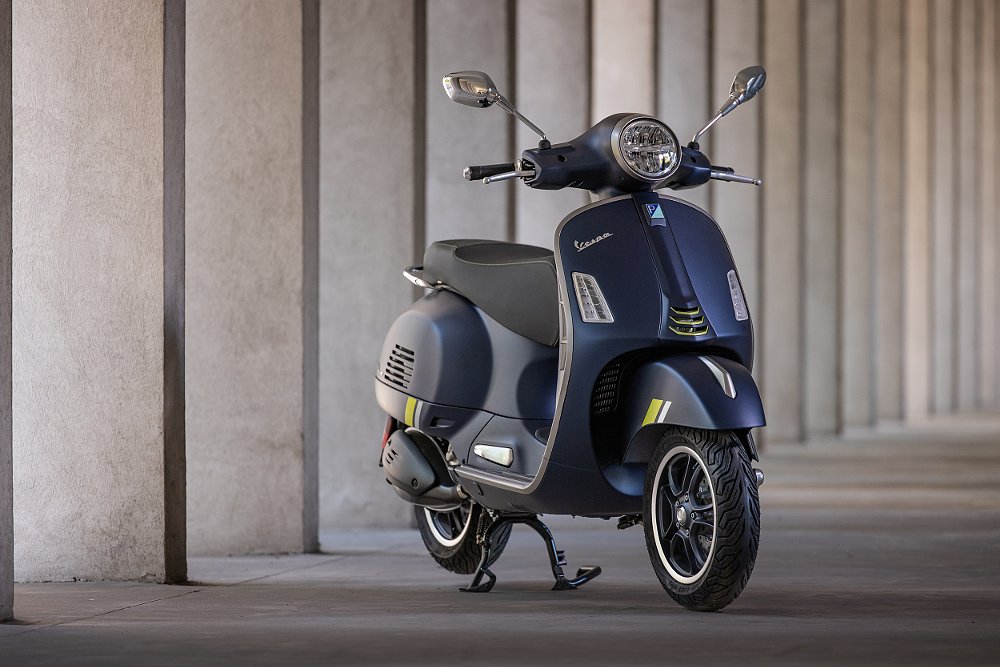
The 4.3-inch TFT display is the biggest difference with the GTS Supertech ($8,499). It adds all the same features as the Supersport’s MIA system plus phone-based navigation. The underseat compartment is carpeted and illuminated with tiny interior lights when open.
We have to talk about the starting price of $7,799, which can soar as high as $8,499 for the Super Tech. On one hand, it wouldn't be possible to add all these new features to an old GTS for the $700 increase over the old versions. On the other hand, that's a 10% increase over old MSRPs. (If you don’t need the updates mentioned in this article, you might consider saving a few bucks by buying a leftover GTS!) A GTS 300 is now approaching or exceeding $10,000 out the door at your local Vespa dealership. That could buy you any number of great scooters or even motorcycles. Vespa is unquestionably a premium brand in the scooter world, and that means premium prices.
Riding the GTS 300
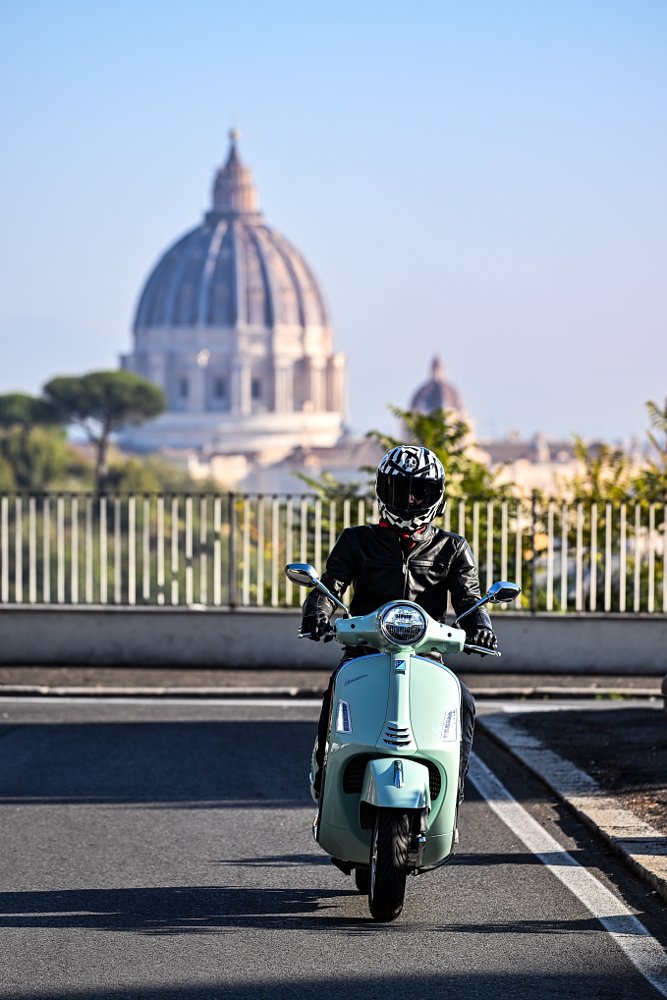
My test GTS 300 was a base model in classic "Verde Amibile" with a grey seat and the half analog, half digital dash. Vespa said its MIA connectivity app was still pending approval from Google Play and the Apple Store, so I wouldn’t have been able to test the TFT dash’s major features if I had a SuperTech. Fine by me, since Verde Amibile is one of my favorite colors for the GTS and it only comes on base bikes. You cannot separate Vespa from style.
The press introduction ride route would snake around the streets of Rome before a jaunt northwest to Lago di Bracciano and back. The GTS 300 is the best scooter in Vespa’s range for a day of mixed riding like this. It is thin enough to move easily through the city, yet fast enough to keep up on larger routes between metro centers. (There will not be a GTS 125 option in the United States. We will only have the GTS 300 range.)
Riding the Vespa GTS in the city
The new GTS 300 feels nearly identical to the last model when pushed off its centerstand and ready to ride. The seat profile is a little narrower up front, maybe a little less comfortable with an easy reach to the ground. I have more legroom here than I did on the flight over to Italy, and excellent protection from the elements, too. Turn the ignition switch to “ON” with the key fob safely stuffed in a pocket, hit the starter, and the Vespa is ready to ride. Simply twist to go, pull the right lever for front braking, and pull the left lever for the rear.
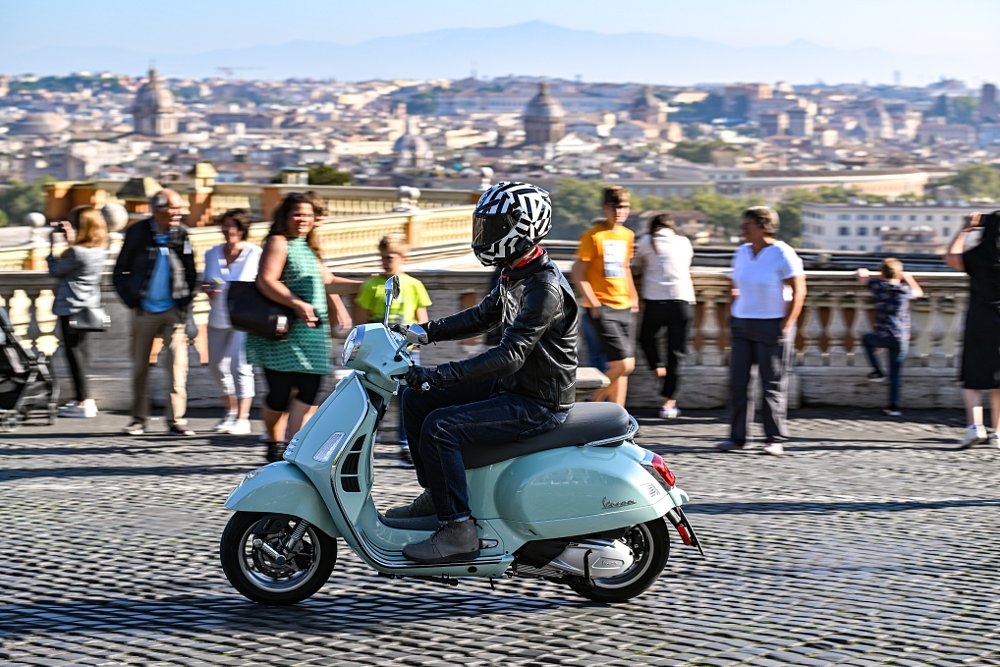
The center of gravity is extremely low, as usual, so the scooter feels very easy to handle around town. Steering inputs can be as rapid as you like without upsetting the front end. With four suspension adjustment settings, you probably won’t need to touch a shock spanner after buying a GTS unless loading up for a two-person tour or something like that. Despite using the most powerful single-cylinder engine ever offered by Vespa’s factory, the GTS would be an appropriate choice for anyone looking to buy their first full-size scooter. The whole package feels solid and capable of surviving years of everyday use. As I look around at the other scooters cruising around Rome, I see countless older Vespas doing the work of daily living: commuting, hauling groceries, carrying passengers, and slipping into parking spots for a quick coffee break.
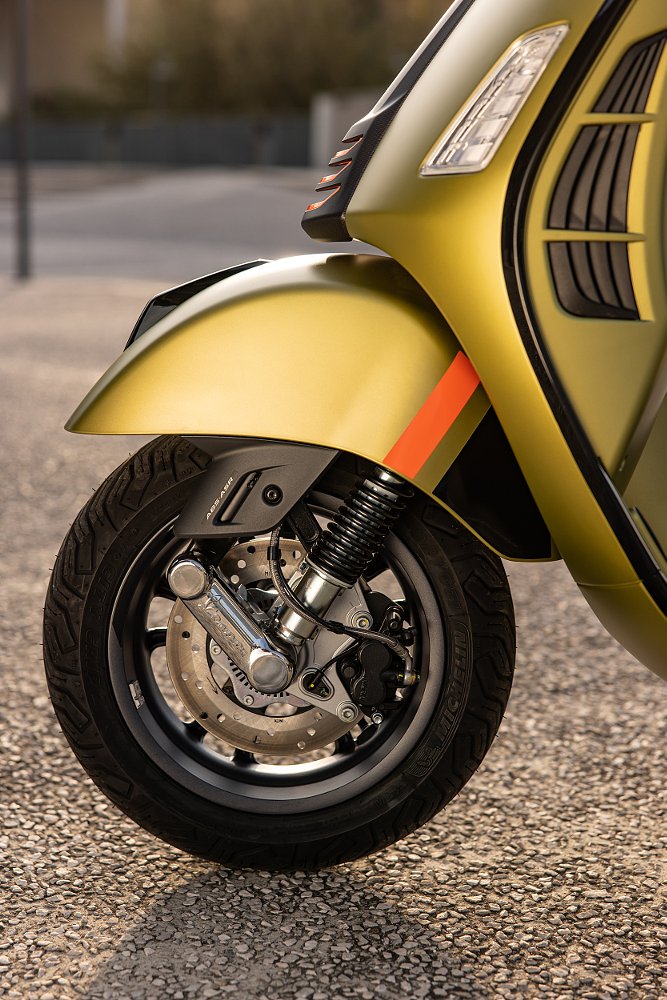
Scooters dominate Rome’s roads. They are everywhere. And if you want to ride with the locals, you need to be watching your surroundings and covering your brakes because the lane splitting never stops. The route cut through the neighborhood of Aurelio, wound through tight cobblestone streets, and blitzed past Vatican City before crossing the Tiber for a hot lap of the Coliseum and a quick tour of Trastevere. It would not be possible to move around Rome so easily on any other vehicle. Even though the GTS is the largest Vespa available, it can fit through any gap in traffic to keep its rider moving. If the handlebar will clear, you can make it. And you’ll gain plenty of room for maneuvers with the 300’s acceleration from a stop. Give it the beans and let them eat your Vespa dust.
Just when I was starting to feel like I had the hang of riding in Rome, I was passed like I was standing still by somebody's nonna on a 125. She had one hand on the throttle, the other holding a cigarette and gesturing wildly in the air, with a phone shoved into her three-quarter helmet so she could yell at whatever poor soul was on the other end. There is always someone faster than you...
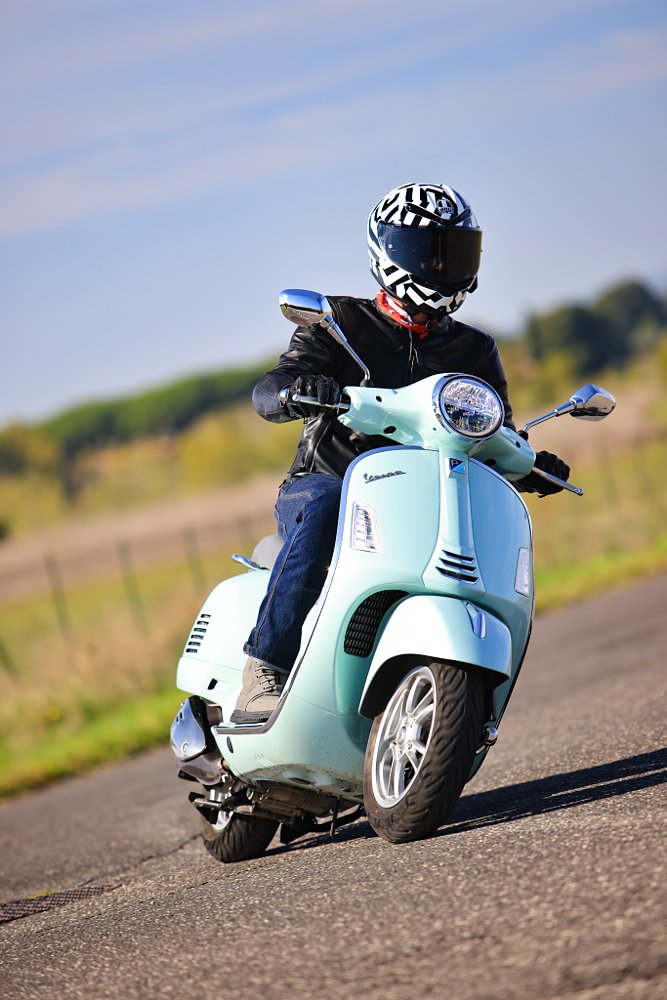
The GTS stretches its legs on the open road
A ride out to the lake and back would demonstrate the Vespa’s abilities as a highway mount and mini-tourer. A GTS is heavy enough that it doesn’t blow around every time a truck passes. It’ll clip along at 75 miles per hour without throwing its piston up through the seat, it offers two-channel ABS, and there are accessory windscreens available to get wind blast off the rider(s) if you spend a lot of time on fast roads. (From what I saw, the Italians love large touring screens on their scooters. I did not get a chance to try one.) The GTS 300 is the only Vespa product I would consider if your riding includes U.S. highways.
The multi-lane routes gave way to quiet back roads with sweeping bends and small hills to climb. Here, the Vespa seemed happiest. If you’ve never tried railing a large scooter through some bends, it’s not a bad way to spend an afternoon. The GTS’ chassis and power are plenty amusing when you want to fast-forward through the countryside. But that’s not really why you buy a Vespa, is it?
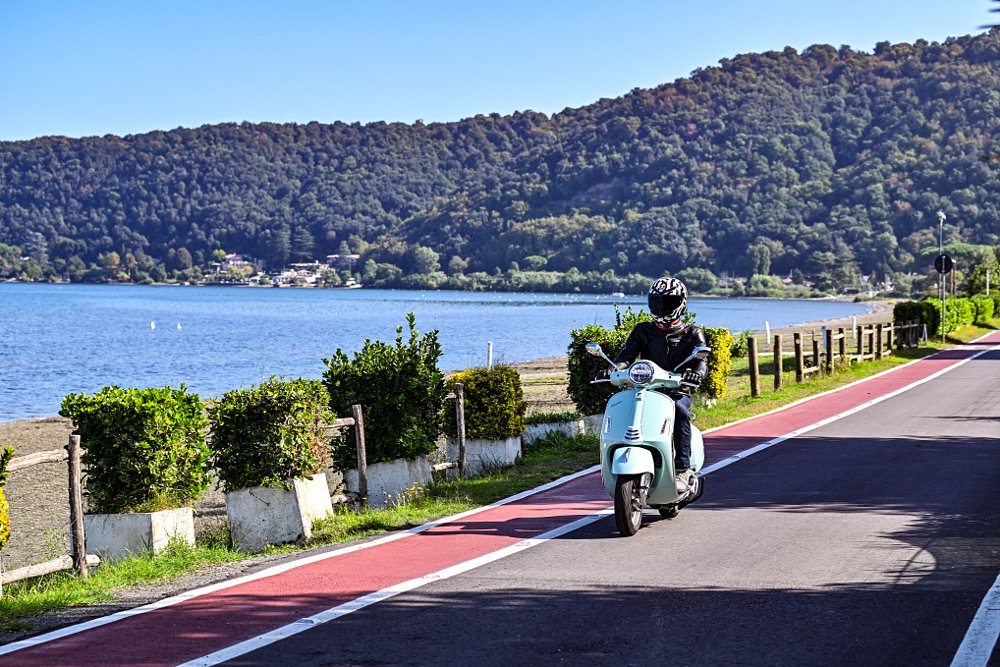
GTS customers want the look and style that comes with a real Vespa, but they’re willing to pay the premium over a Primavera or Sprint to get extra power and features. There simply aren’t many scooters currently sold in the United States that can handle 70 mph speed limits. And there is only one Vespa.
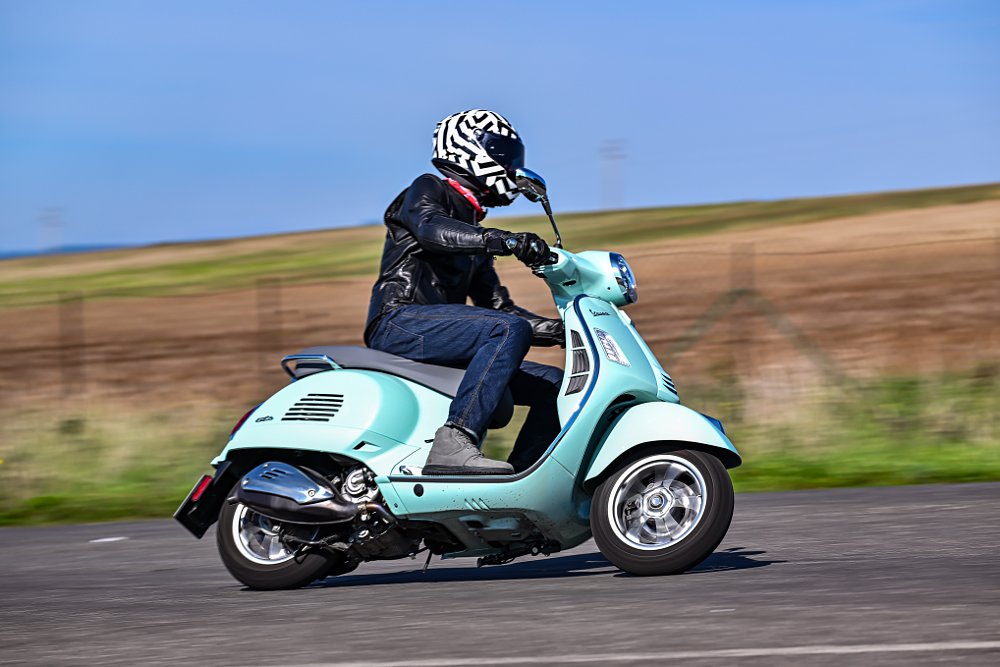
Which GTS is best?
You'll pay a premium for it, but the GTS 300 is the most versatile new Vespa for riders living outside urban centers in the United States. That's doubly true if you have some experience around scooters and motorcycles. The base GTS seems like the best deal to me if you don’t need any of the fancy features. The GTS Super doesn't offer a whole lot unless you specifically want the red, black, or white paint. I could see a younger customer leaning towards the more modern graphics of the SuperSport, while the SuperTech finally brings TFT to the Vespa world.
Because I was unable to test the MIA app, I can’t speak to its quality or usefulness. What I can tell you is that the TFT dash on the SuperTech was underwhelming. The bezel and display look out of place together. It's a good first effort, but the end result just doesn’t look as polished as the rest of the scoot. That said, I think could look past the aesthetics if I really needed navigation. There aren’t many good places to attach a smartphone on a Vespa, and it’s safer to use a built-in screen with an app while your phone charges inside the glove box. Would you rather put $700 towards a nicer Vespa, or $700 towards a replacement phone?
Parting thoughts
In over 75 years of Vespa history, the brand has stayed very close to the original designs and use cases that made Pontedera famous. There are competitors, copycats, and blatant knockoffs available, and yet none of them have come close to Vespa's success in style and design. The extensive parts and accessories catalog makes a big difference, too. Scooter riders love to personalize and modify their rides because they see the scoots as an extension of themselves. The decision to choose a Vespa, even if it costs significantly more than other offerings, is part of that same mindset. There is only one king of the Vespas. If you must own the Italian original, I don't think any model of this scooter will let you down. Vespa has the recipe dialed in at this point, and its designers make as few changes as possible to preserve its iconic status.
The Vespa GTS 300, GTS 300 Super, GTS 300 SuperSport, and GTS 300 SuperTech will be available in a total of 14 color combinations for 2023. The first U.S. units will arrive in dealerships starting in November.
| 2023 Vespa GTS300, Super, Supersport, and Supertech | |
|---|---|
| Price (MSRP) | $7,799 (base); $7,999 (Super); $8,099 (Supersport); $8,499 (Supertech) |
| Engine | 278 cc, liquid-cooled, four-valve, single cylinder |
|
Transmission, final drive |
Continuously variable transmission with enclosed belt |
| Claimed horsepower | 23.8 @ 8,250 rpm |
| Claimed torque | 19.2 foot-pounds @ 5,250 rpm |
| Frame | Steel monococque |
| Front suspension | Single-arm with coil spring and shock absorber |
| Rear suspension | Dual rear shock absorbers, adjustable for preload |
| Front brake | Single Nissin caliper, 220 mm disc, ABS |
| Rear brake | Single ByBre caliper, 220 mm disc, ABS |
| Rake, trail | TBA |
| Wheelbase | 54.3 inches |
| Seat height | 31.1 inches |
| Fuel capacity | 2.2 gallons |
| Tires | 120/70R12 front, 130/70R12 rear |
| Claimed weight | TBA |
| Available | November 2022 |
| Warranty | 24 months |
| More info | vespa.com |




